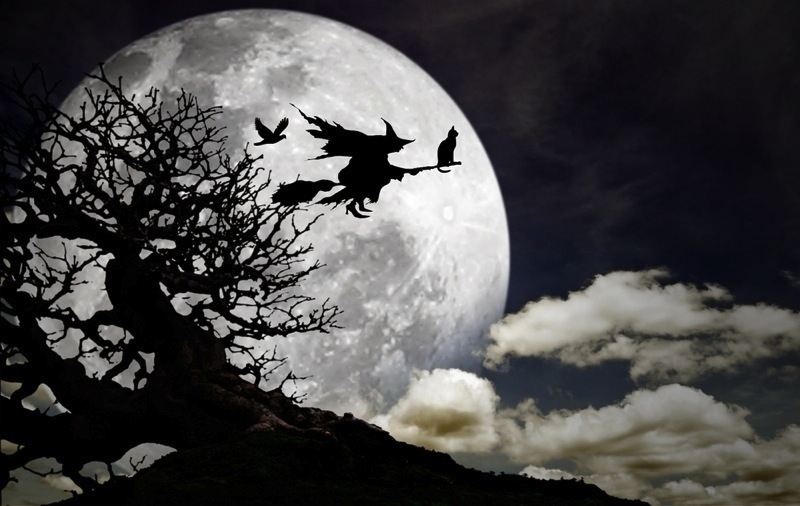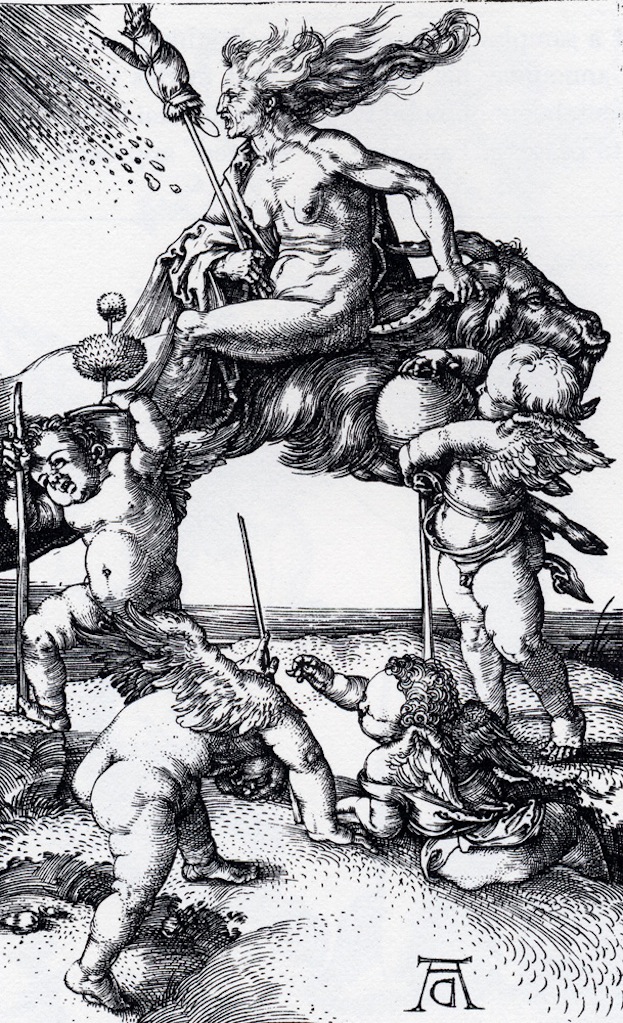A Bewitching History: Why Witches Ride Broomsticks

Among the throngs of this year's trick-or-treaters, hundreds of Americans will be dressed as Miley Cyrus or a minion from "Despicable Me," but more will go with a fail-safe getup. "Witch" once again reigns as the No. 1 costume for adults, according to the National Retail Federation's 2013 Halloween survey.
Many of the pointy-hatted sorcerers who roam the streets this Oct. 31 will be carrying broomsticks or besoms. But few likely know the murky tale of how witches came to be associated with those familiar household objects.
The story — full of sex, drugs and Christian inquisitors — starts with poisonous plants like black henbane (Hyoscyamus niger), sometimes called stinking nightshade. [What's Witchcraft? 6 Misconceptions About Wiccans]
Flying ointments
Ingesting henbane, which is rich in powerful alkaloids, can cause hallucinations (if it doesn't kill you first). According to legend, witches used herbs with psychoactive properties like henbane in their potions, or "flying ointments." Some historical accounts suggest witches applied these ointments to their nether regions. And what better applicator than a wooden staff?
Lady Alice Kyteler, Ireland's earliest known accused witch, was condemned to death for using sorcery to kill her husband in 1324. (Kyteler escaped, and her maid was burned at the stake in her stead.)
The English historian Raphael Holinshed later recounted the case and described some of the supposedly damning evidence authorities found against Kyteler: "In rifleing the closet of the ladie, they found a pipe of ointment wherewith she greased her staffe, upon which she ambled and galloped through thick and thin."
Sign up for the Live Science daily newsletter now
Get the world’s most fascinating discoveries delivered straight to your inbox.
Another oft-cited account comes a from 15th-century manuscript by theologian Jordanes de Bergamo. In his "Quaestio de Strigis" of 1470, Bergamo writes of witches who on "certain days or nights they anoint a staff and ride on it to the appointed place or anoint themselves under the arms and in other hairy places." [13 Halloween Superstitions & Traditions Explained]
It's hard to know whether or not witches actually did the deeds they were rumored to have done (like mounting hallucinogen-laced wooden staffs in their covens). Sources from the era when fears about witchcraft peaked are unreliable and biased, noted Charles Zika, a professor at the University of Melbourne, who has written about the imagery of witchcraft. Modern knowledge of witches often comes from manuals written by inquisitors, ecclesiastical judges and testimony by accused witches — much of it produced under duress or torture, Zika explained.
"A lot of it we can't trust as descriptions of social reality at all," Zika told LiveScience.
Sexy witches
The explicit implications of staff riding, and the sexual nature of witches in images throughout the Renaissance, are difficult to ignore. Artists like Albrecht Dürer and Hans Baldung depicted them naked. The witch in one engraving by the Italian artist Parmigianino is not riding a broom, but rather a gigantic, anatomically graphic phallus.

But racy images of witches fit in with a culture in which there was much speculation about female sexuality, Zika said.
"It's bound up with an anxiety about women and what place they have in society at a time when Europe was undergoing fundamental changes and transformations in society," Zika said. With the Protestant Reformation, some religious leaders established bans on drinking and dancing, brothels were closed and marriage was more strictly codified and controlled.
In the late 16th and early 17th centuries, images of witches riding up and out of chimneys start to dominate. During this period, women also were more closely associated with domestic space than they were 200 years earlier, Zika said. At that time, too, brooms are depicted more and more often in relation to domestic work in art.
"It seems to me that this idea of them flying out the chimney is actually kind of a protest against this confinement in domestic space," Zika said. "Witchcraft is symbolically in some ways freeing individuals from that kind of conception of their realm."
Can witches really fly?
Though the image of the broomstick stuck, early depictions in 15th- and 16th-century Europe show witches flying on a wide range of items, including stools, cupboards, wardrobes and two-pronged cooking forks, Zika said. But rarely are witches shown getting aloft on their own.
"There are very few representations of what you might call flying witches — they're usually riding some implement or animal," he explained.
"It's not their own bodies that are propelling them," Zika said. "The explanation in the theological handbooks is that they are being supported by demons and devils that are holding them."
Hundreds of years later, it can be tough to tease out what people and artists of the Renaissance actually believed about witches. In any case, some brave, if ill-advised, modern accounts suggest witches' flying potions probably worked. In his book "The Long Trip: A Prehistory of Psychedelia" (Daily Grail Publishing, 2008), author Paul Devereux recounts folklorist Will-Erich Peuckert's 20th-century experimentation with a mixture of belladonna, henbane and Datura:
"We had wild dreams. Faces danced before my eyes which were at first terrible. Then I suddenly had the sensation of flying for miles through the air. The flight was repeatedly interrupted by great falls. Finally, in the last phase, an image of an orgiastic feast with grotesque sensual excess."
Follow Megan Gannon on Twitter and Google+. Follow us @livescience, Facebook & Google+. Original article on LiveScience.










